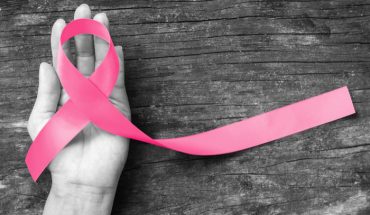I’m now nearly 16 weeks out from my third c-section with Romy and I wanted to chat a little bit about my recovery and top tips for everyone to think about. Let’s not forget that while some might think you are too “posh to push” having a c-section or that it’s somehow the easy way out – it is MAJOR abdominal surgery and should be treated as so. In fact, if I could only give one piece of advice, it would be to remember that. Give yourself the time to rest as much as you can.
If you have been following my page for a while you will have seen my stories directly after my section. If not, you can check them out in my story highlights on my Instagram page @drlauragp.
Let’s think first about what happens during the surgery – the incision is made just below your bikini line and made first through the abdominal wall muscles and then through the wall of the womb. After baby is delivered the womb and abdominal wall muscles are sewn back together. Over time they will heal themselves. The incision on your skin also needs to heal. It’s normal to have a scar after the birth and it is usually horizontal below the bikini line. If it’s an emergency section and they are in a rush to get the baby out it can sometimes be a vertical cut down the centre of the tummy which will be more obvious.
Most people say that recovery from a c-section is longer and more difficult that a vaginal birth, but some vaginal births can be quite difficult and so can lead to many complications and a difficult road to recovery. No matter what kind of birth you have it’s important to look after yourself as well as baby.
Recovery in hospital
Let’s look first at your stay in hospital. Depending on where you are in the country you can stay in hospital anywhere from 48 hours to 5 days. After my first two births I stayed three nights. This time with coronavirus restrictions I only stayed for 48 hours as I wanted to get home to my family. If you can stay in hospital for a bit longer, I would suggest take that chance, especially with toddlers at home as they can be demanding.
Pain medications will be given in hospital. Use them as prescribed, they are not your enemy and it’s important that you aren’t in pain to aid your recovery. If you are susceptible to constipation, then you should ask for laxatives to keep your stools soft as the last thing you want to deal with is constipation and pushing after surgery! As I documented in my story some hospitals use injections to thin your blood as there is a risk of blood clots. You may also need to give these yourself at home depending on local policy.
When in hospital take that time to learn as much as you can from midwives. If you have help use it. Rest. Sleep when baby sleeps (though I usually spend all my time staring down at them – even after three!)
Wound Management in the early days
I know lots of mums worry about dealing with their wound after the operation. Each surgeon will use different materials to suture the wound so the best bit of advice I can give for the early days is to follow the instructions given by your own hospital. Usually the midwives will change the dressing when you are leaving the hospital. I usually leave this on for a couple of days and ask the midwives for some extra dressings when I’m leaving so you can change it if needs be at home. You would be surprised how quickly the wound closes up though. After you shower, pat the wound dry rather than rubbing it. Keep it clean and dry to prevent infection.
One of the biggest issues in the early days is that the wound can be uncomfortable especially if your panties / knickers are sticking into it. For this reason I always have big granny pants (in dark colours!) to wear for the first few weeks after the section – as well as comfy clothes with high waistbands.
While you hopefully shouldn’t have much pain when you go home – I find the biggest issues were coughing or laughing (you are increasing pressure in your abdomen so it can hurt your scar!) so trying to control these helps. Some people swear by using something over the scar to apply pressure at this time (when coughing or sneezing) – even big maternity pads.
It’s also important to look out for signs of infection in the wound. It does happen unfortunately. If the skin around the wound becomes red, painful, or swollen or you develop a temperature you should contact your GP or midwife. Something a lot of women don’t know is that most labour wards will accept you back onto the labour ward for up to six weeks after birth if you are having any issues. Be sure to contact your own maternity department to check guidelines if having any issues.
The first few weeks – returning to normal activities
Like any other major abdominal surgery your body needs time to recover after a c-section and rest is an important part of that journey. It can be hard as obviously you have a newborn to care for and they can be quite demanding, especially if you are breastfeeding! Make sure to utilise your husband or partner and family as much as you can. Ask them to drop off food or help out with chores around the house.
The advice from the hospital is usually not to lift anything heavier than your baby for the first six weeks – not easy I tell you – have you tried lifting baby in a car seat or felt the weight of a buggy? Especially hard if you have a toddler at home. This is an important step if you can manage it, and honestly one I always fail at!
It’s important to try and go for short gentle walks and stay mobile in the first six weeks to help reduce your risk of blood clots. The temptation is easy to stay on the couch and soak up the fourth trimester but we should make every effort we can.
Take extra care getting up and around while you heal. Avoid the stairs as much as you can. Keep everything close by on the couch – nappies / food / remote control! Find a good way to get into and out of the bed without putting extra pressure on your tummy muscles. You may find it easier to get out of bed by rolling on to your side, dropping both legs over the side of the bed and then pushing yourself up sideways into a sitting position. Try to stand up as straight as you can. You can do the opposite to get back into bed. This can be an issue if you have a co-sleeper so sometimes you might need to keep that up higher, (nearly behind the bed) if you are having difficulty getting out with it there.
You should wait up to six weeks before driving, having sex, exercising, or lifting or carrying anything heavier than your child. If you were exercising pre-pregnancy then the usual advice is to check in with your GP at the six week check. I usually suggest that all my patients get a full check over by a women’s health physio as well. Just because you had a c-section doesn’t mean your pelvic floor wasn’t affected. The process of carrying a baby can affect your pelvic floor also. Remember you know your body best, so if at six weeks you still don’t feel certain about something (having sex anyone?) Then wait until you are sure.
Nursing pillows can be a great help with feeding (breast or bottle) in the early weeks as they can help to keep pressure off the incision scar. If you don’t have a nursing pillow and you are breastfeeding then there are certain feeding positions that can help as well such as laid back feeding or lying down on the bed to feed.
Don’t forget about your mental health either
Just as you need to take care for your body, you also shouldn’t forget about your mental health. Many women can suffer with baby blues and post-natal depression after birth. In fact, some women who have traumatic births or sections that were unplanned can have higher rates of postnatal depression. If you feel exhausted, sad or find yourself crying all the time – don’t ignore it. Talk with your partner or health professional.
Scar management
At about two weeks after surgery your wound should be healing but it will take about six weeks to three months for your scar to heal over completely. Its normal to lose feeling in the area of your wound, but in most cases this will return after some time has passed. Remember that as they cut through the skin and muscle, nerves are also cut leading to these unusual feelings.
How we scar depends on a number of factors including skin type. Darker skinned people are more likely to scar. Some people also have more of a propensity to keloid (or hypertrophic) scarring.
There are a number of tricks you can try to help prevent an abnormal scar forming and improve the appearance of your scar:
-Scar massage can help to break up scar tissue and prevent any itching or adhesions internally. You can use massage oils to massage the scar a couple of times a day moving over and back and up and down before applying any moisturiser or silicone gel.
-Avoid sun exposure – scars can be more sensitive to getting sunburnt
-Extremes of temperature can make itchy scars worse so avoid hot baths or showers in the early days
-Using a silicone gel such as KELO-COTE® advanced formula on a healed scar will help both keep it hydrated and help prevent it from drying out. KELO-COTE® is intended for the treatment and prevention of hypertrophic and keloid scars (abnormal scars) resulting from burns, general surgical procedures and trauma wounds It can be used once the scar is closed on the outside (so visibly closed). KELO-COTE® is proven in clinical studies and used by plastic surgeons the world over to help improve the appearance of hypertrophic and keloid scars – it can help to soften and flatten raised scars as well as reducing discolouration and redness. It can be used on scars up to 4 years after surgery. FYI you need to use it for minimum 60 to 90 days.
I hope you found these hints and tips useful post c-section. Head on over to my Instagram post to let me know if you have anything you would like to add or if you have any questions for me.
- My C-Section story & advice - 9th October 2020
- Back to school: Keeping your kids healthy - 18th May 2020





